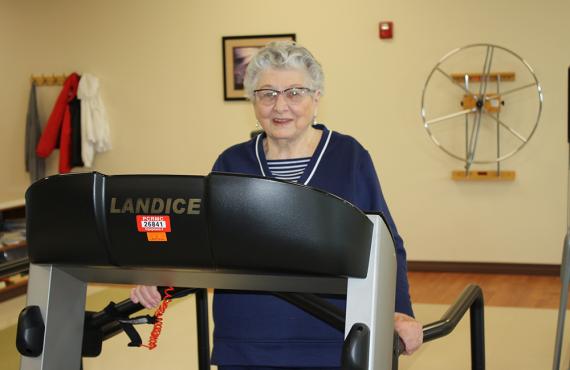Published on November 14, 2023

Read Time: 4 Minutes
Three Things to Know
- Most cases of RSV infections are mild. However, in infants, RSV can cause pneumonia (inflammation of the air sacs in the lungs) or bronchiolitis (inflammation of the bronchioles, or small airways, in the lungs).
- The influenza virus causes the flu, and three antiviral drugs are recommended for treating influenza.
- The common cold is caused by the rhinovirus, and most people with colds get better without treatment within 7 to 10 days.
By Shruti Sinha, MD
Phelps Health
Parents, how many times has this situation happened to you? Your child comes to you, complaining of a sore throat, runny nose and a fever.
You put on your detective hat and consider the possibilities. Could it be the flu, common cold or RSV (respiratory syncytial virus)? How do you know if your child has one of these? How do you tell the difference?
These three respiratory illnesses all have common symptoms and are all contagious, some more than others. In fact, a person can be infected with multiple viruses that cause these diseases at the same time.
In addition, if you have asthma, you are more likely to get respiratory infections or complications from these diseases.
Let’s break down the similarities and differences among RSV, the flu and the common cold.
Respiratory Syncytial Virus (RSV)
RSV causes an infection that can affect a person’s respiratory system, including the nose, throat and lungs.

Most cases of RSV infections are mild. However, in infants, RSV can cause pneumonia (inflammation of the air sacs in the lungs) or bronchiolitis (inflammation of the bronchioles, or small airways, in the lungs).
Initial signs of RSV are similar to mild cold symptoms, including congestion, runny nose, fever, cough and sore throat. Young infants with this infection may be irritable, tired and have trouble breathing.
RSV can be diagnosed by a rapid antigen RSV test, which takes under 30 minutes to get results. While tests are accurate about 80% to 90% of the time, they can yield false positive or false negative results.
Premature infants, infants up to 12 months old, and especially children 6 months and younger, are all at high risk of developing RSV. Children younger than 2 years with a weak immune system, chronic lung disease or congenital (present from birth) heart disease also are more at risk of getting this disease.
RSV is spread from person to person through close contact with someone who is infected. Usually, the virus is spread from coughing and sneezing or touching objects, such as toys or doorknobs. A person can become sick from RSV 2 to 8 days after being exposed to the virus.
Normally, RSV symptoms clear up on their own in a few days. The main treatment for bronchiolitis caused by RSV is supportive care, including making sure your infant is staying hydrated and eating. In some cases, saline nose drops can be used to clear any obstructions in their nose.
Most infants with RSV can be treated at home. However, if your infant is appearing dehydrated or not feeding properly, and develops respiratory distress or apnea (when breathing temporarily starts and stops, especially during sleep) and requires supplemental oxygen, they may need to be hospitalized.
To help protect your child from RSV, keep babies under 6 months old away from people with colds, and clean and disinfect hard surfaces. Also, remember to wash your hands and your children's hands often to reduce the spread of germs.
Two RSV antibody products – nirsevimab (Beyfortus), and palivizumab (Synagis) – are available to help prevent a severe RSV disease in infants and young children.
Influenza (Flu)
The flu, also called influenza, is an infection of the nose, throat and lungs caused by the influenza virus. The flu typically is seen more often in people from the fall through the spring.
Symptoms of the flu include high fevers, coughing, headaches, body aches and other respiratory symptoms. Like RSV, a rapid antigen flu test is used to diagnose the illness.
Currently, three antiviral drugs are recommended for treating the flu: oseltamivir (Tamiflu), zanamivir (Relenza) and peramivir (Rapivab). These drugs can treat cases of both influenza A and B and have the biggest impact when taken within 48 hours of the onset of flu symptoms. That’s why quick diagnosis and treatment are important.
The flu vaccine is safe and recommended for everyone ages 6 months and older.
Common Cold
The common cold is caused by the rhinovirus. Symptoms of colds can include a runny nose, sneezing, fever, loss of appetite and cough.
No cure exists for the common cold. Most people with colds get better without treatment within 7 to 10 days, but a cough may last a few more days.
To help with cold symptoms, be sure to get enough rest, drink lots of fluids, and use a humidifier or nasal saline rinse.
For some children, an ordinary cold or a flu virus can quickly turn into RSV, so treating symptoms in a timely manner is important.
Find a Pediatrician
Shruti Sinha, MD, is a pediatrician at Phelps Health. To learn more about our Pediatric services or establish care with a Phelps Health pediatrician or pediatric provider, call (573) 426-3225.

